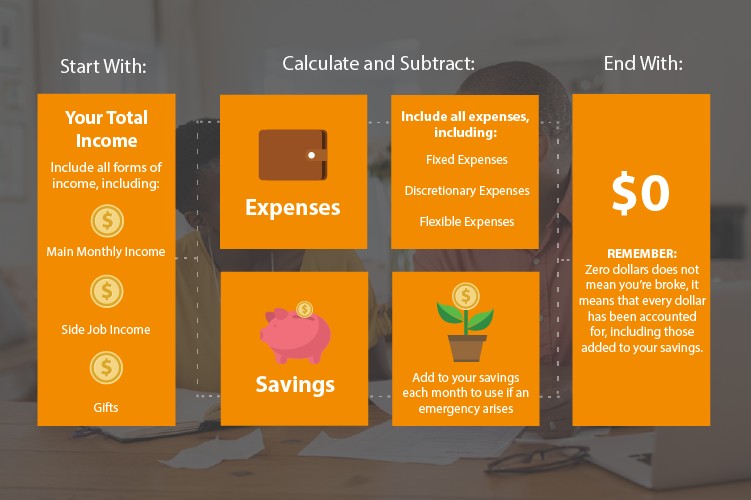
In an economic climate characterized by its dynamism and occasional unpredictability, the ability to effectively manage personal finances has transitioned from a beneficial skill to an absolute necessity. At the heart of robust financial management lies a well-structured and, crucially, *workable* monthly budget. Far from being a restrictive exercise in deprivation, a truly effective budget serves as a powerful roadmap, providing clarity, control, and the strategic foresight required to achieve financial goals, mitigate stress, and build lasting wealth. For anyone seeking to master their money, understanding how to construct and adhere to a budget that genuinely aligns with their life and aspirations is the foundational step.
The journey to creating a budget that works begins with a clear, honest assessment of your current financial reality. This involves meticulously tracking all sources of income and every single expenditure over a typical month. Many people operate under assumptions about where their money goes, only to be surprised when confronted with the actual figures. This initial data collection phase is paramount. It’s about more than just noting major bills; it’s about capturing every coffee run, every subscription service, every impulse purchase. Tools ranging from simple spreadsheets to sophisticated budgeting apps can facilitate this process. The goal here is not to judge spending habits immediately, but merely to observe and quantify them. This comprehensive snapshot reveals your true financial landscape, highlighting areas where money might be unknowingly slipping away, much like a business conducting an audit to identify inefficiencies.
Once you have a clear picture of your income and outflow, the next critical step is to categorize your expenses. Broad categories typically include fixed expenses (those that remain relatively constant each month, such as rent/mortgage, loan payments, insurance premiums, and utilities) and variable expenses (those that fluctuate, like groceries, dining out, entertainment, and transportation). Within these, it’s beneficial to further differentiate between needs (essential for living) and wants (discretionary spending that enhances quality of life). This categorization provides the framework for allocating your income. For instance, knowing that your fixed housing costs consume a certain percentage of your income immediately frames how much is left for other categories. This organizational phase mirrors the cost accounting processes in a business, where expenses are categorized to understand operational leverage and profitability.
With categories established, the heart of budget creation involves assigning realistic limits to each variable spending category. This is where the “workable” aspect truly comes into play. An overly restrictive budget that starves essential spending categories or eliminates all discretionary enjoyment is destined to fail. Instead, the process should be about conscious allocation rather than punitive cuts. If your initial tracking showed you spend a significant amount on dining out, for example, rather than eliminating it entirely, perhaps you set a more modest, yet still enjoyable, weekly or monthly allowance. The aim is to find a balance that allows you to meet your financial goals without feeling constantly deprived, ensuring sustainability. This is akin to a company setting realistic marketing budgets or R&D allocations—enough to achieve objectives without jeopardizing overall financial health.
Crucially, an effective budget must incorporate dedicated savings and debt repayment goals *as line items*. Too often, savings are treated as an afterthought—money left over at the end of the month. This approach rarely yields substantial results. Instead, treat savings and debt payments as non-negotiable expenses, much like your rent or mortgage. Whether it’s building an emergency fund, saving for a down payment on a house, or aggressively paying down student loans, allocate specific amounts to these goals at the beginning of each month, ideally automating transfers to separate accounts. This “pay yourself first” philosophy ensures consistent progress towards long-term financial security and freedom, mirroring a business’s strategy of reinvesting profits for future growth.
Finally, and perhaps most importantly, a budget is not a static document; it is a living, breathing financial tool that requires regular review and adaptation. Life is dynamic, and so too should your budget be. Unexpected expenses arise, income levels change, and financial goals evolve. Schedule a monthly or bi-weekly “budget check-in” to review your spending, compare it against your plan, and make necessary adjustments. Did you overspend in one area? Where can you cut back next month? Did you receive a bonus? How can you strategically allocate it? This iterative process of review and refinement ensures that your budget remains relevant, realistic, and effective in helping you navigate your financial journey. It cultivates financial discipline and empowers you to make informed decisions rather than reactive ones, fostering a sense of control and confidence that extends far beyond your bank account. A budget that truly works is not a burden, but a blueprint for financial empowerment and the realization of your aspirations.